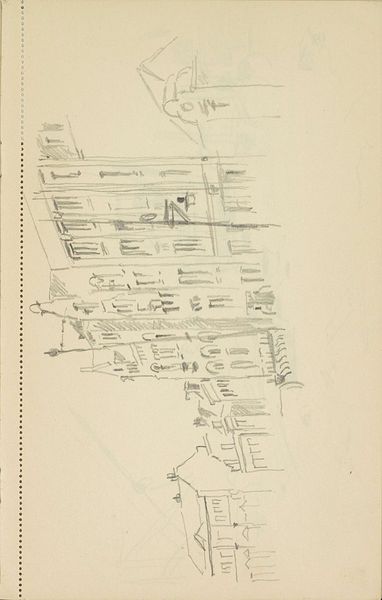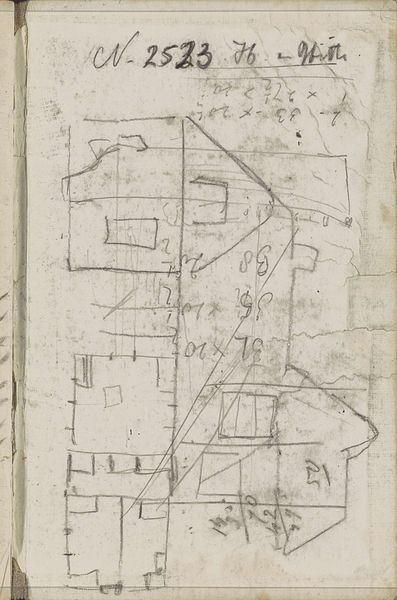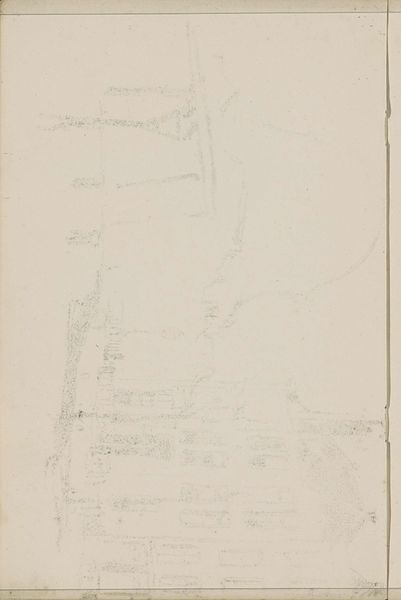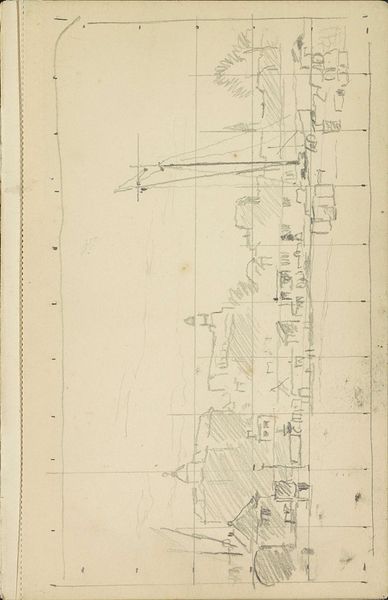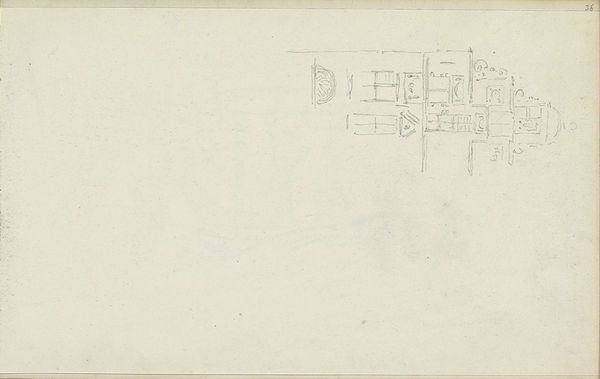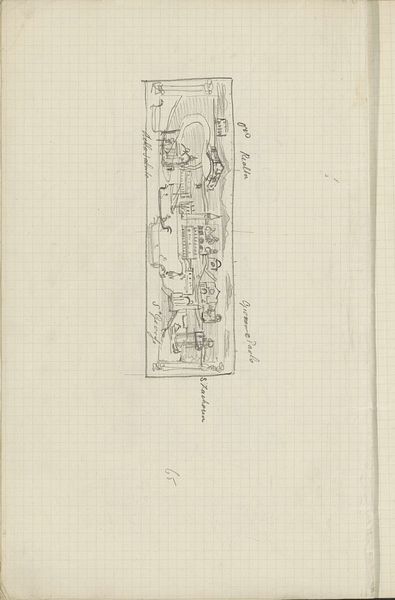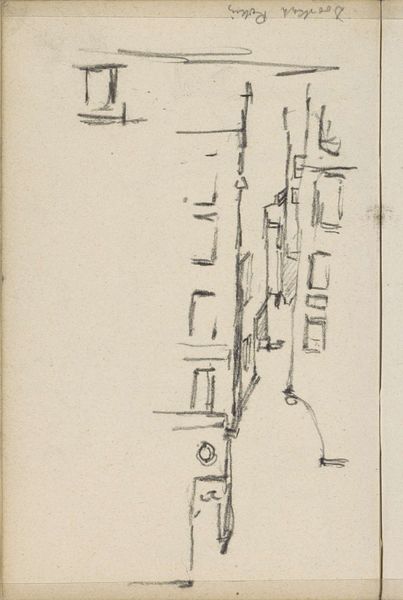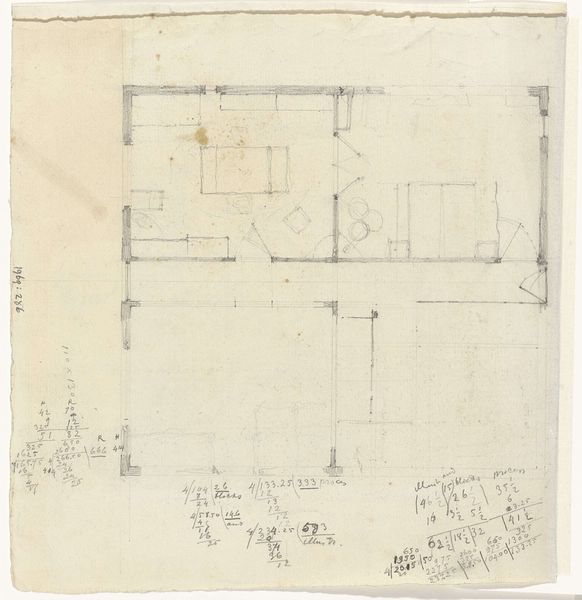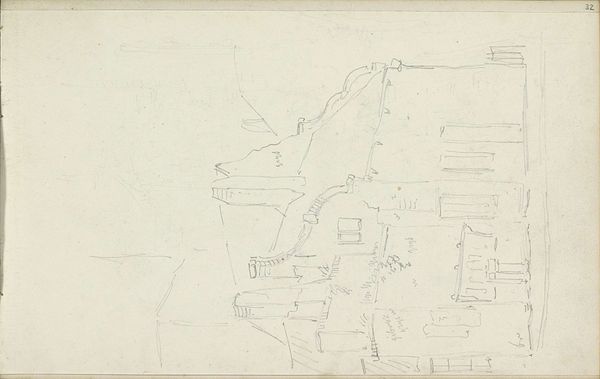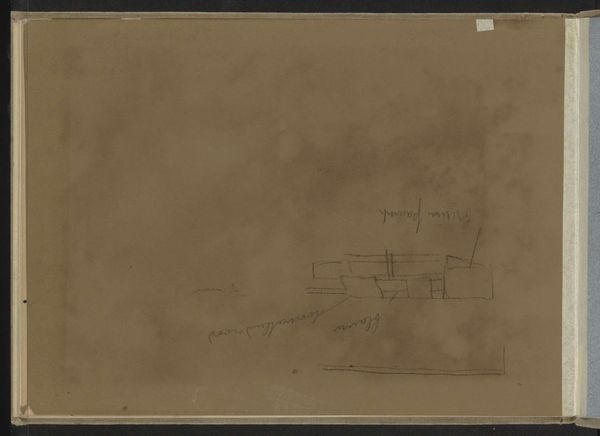
drawing, pencil, architecture
#
drawing
#
neo-impressionism
#
landscape
#
geometric
#
pencil
#
architecture
Copyright: Rijks Museum: Open Domain
Curator: Here we have "Metseltechniek voor een muur," or "Bricklaying Technique for a Wall," a pencil drawing by Carel Adolph Lion Cachet, dating from around 1895. Editor: It's surprisingly captivating for a technical drawing! There’s a real clarity in the lines, a rhythmic geometry that is pleasing to the eye, especially with the variance in the brick patterns. Curator: Exactly. While at first glance it may seem purely functional, this drawing provides insight into the labor and skill involved in bricklaying at the time. Cachet seems interested in representing both the standard grid-like pattern and a more decorative herringbone style. He also gives attention to a detail of what he called a "waterdichte keldervloer en muur", which tells me about contemporary construction techniques. Editor: I agree, those subtle variations in the patterns elevate it. I’m struck by the balance between the precision of the lines and the slight imperfections inherent in a hand-drawn sketch. It's not just a representation of bricklaying; it’s a meditation on form and structure, how repeating elements create something whole and strong. Curator: I think what’s really interesting here is the blend of craft and design. Bricklaying isn’t just about putting bricks together, it’s about understanding the materials, the process, and how those bricks come together to build shelter for people and a lasting social structure. You can see the traces of Neo-Impressionist influence even in this fairly unassuming sketch. Editor: You are right, thinking of it in terms of construction allows for an interpretation far from mundane utility. I had thought it a cool arrangement of shape, rhythm and direction of stroke on the wall but it can represent labor and shelter if you examine how Cachet shows its "technique" in relation to material consumption and architectural concerns of that period. Curator: The drawing style highlights both artistic license and careful depiction, making it useful beyond simple instruction. The composition is balanced yet also has details of daily work in The Netherlands at the end of the nineteenth century. Editor: I’ll look at brick walls with a new perspective after this. Who knew such a seemingly practical sketch could offer so much for contemplating the artistic and social?
Comments
No comments
Be the first to comment and join the conversation on the ultimate creative platform.
